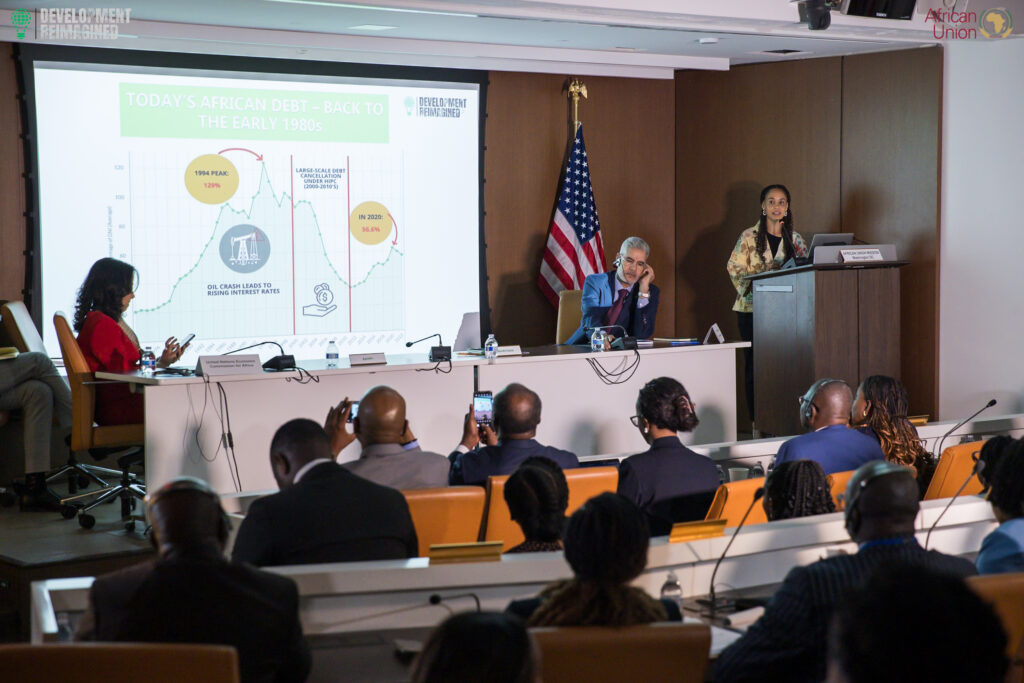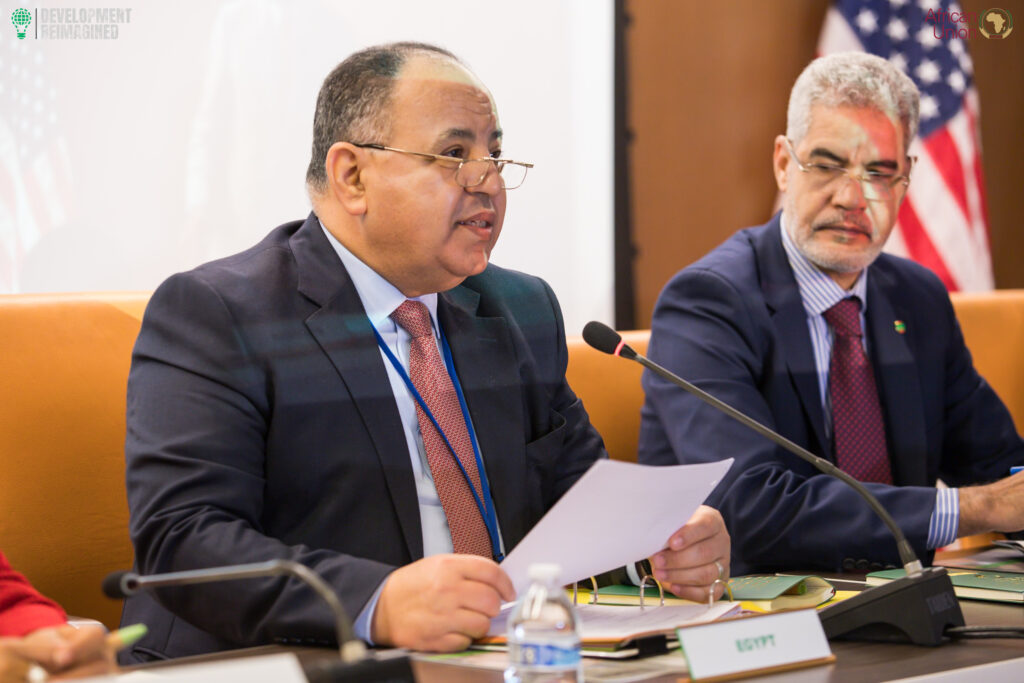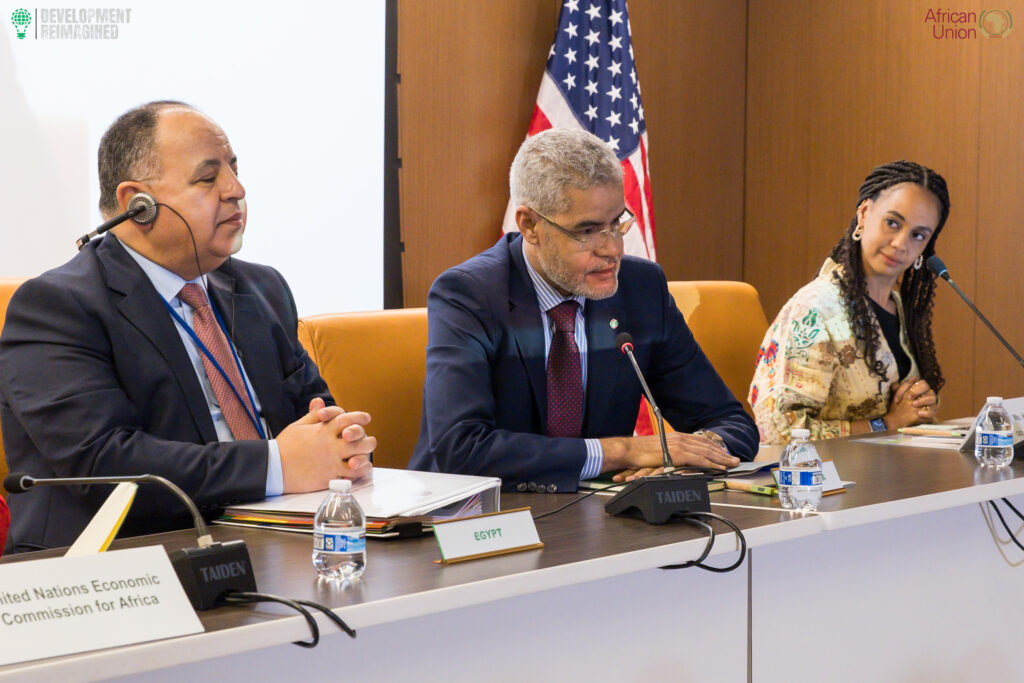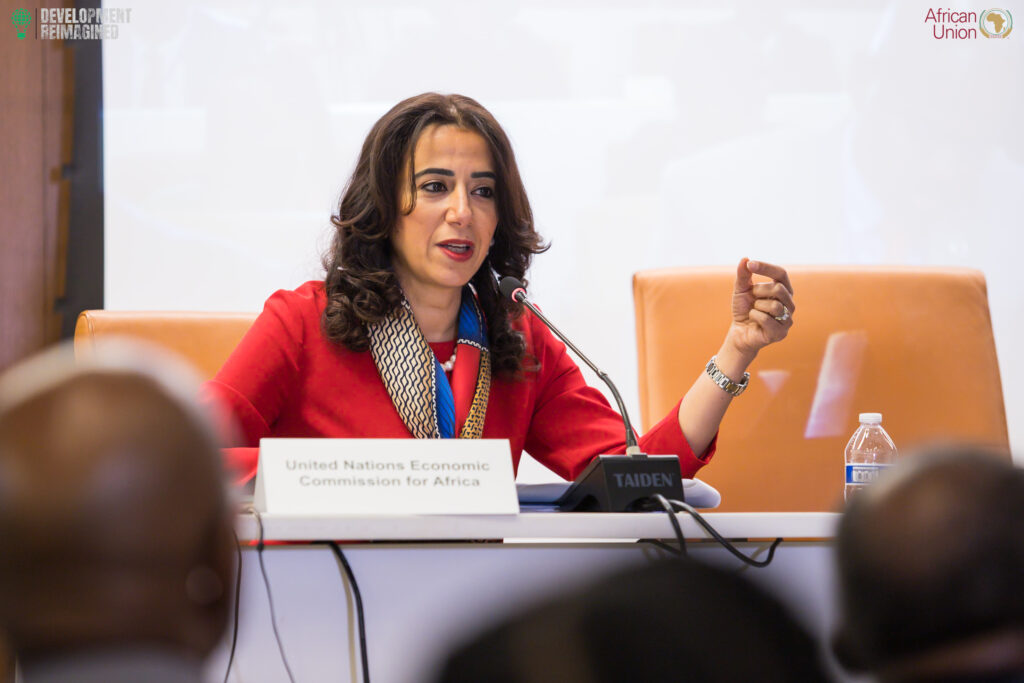By Development Reimagined and the African Union.
On 17th April, on the sidelines of the IMF-World Bank Spring Meetings, Development Reimagined and the African Union, came together to host a timely event that explored concrete and tangible ideas for reimagining the global debt relief system.
Currently, African governments are collectively paying around US$130 billion per year in debt service costs, i.e. record levels in absolute terms, of which approximately 60% is just interest. While current overall debt levels expressed as a percentage of GDP on average and in most African countries are at levels last seen in the early 1980s (i.e., not the highs of the 1990s and 2000s – the era of the Highly Indebted Poor Countries initiative), some African countries are today facing a debt liquidity crisis, a few others are facing a debt solvency crisis, and all are facing a long-term crisis of insufficient and expensive debt for development. As there are now only six years to reach the UN’s Sustainable Development Goals, Development Reimagined forecasting shows that there are still huge financing gaps across Africa which need significant new, highly concessional debt, much larger than what current debt ceilings and IMF quotas would enable. However, the current global debt management system is not designed in a way that supports debt crises effectively – which the event sought to unpack.
The event had a stellar line up including Ms Hannah Ryder, CEO of Development Reimagined, Dr Hanan Morsy, Deputy Executive Secretary and Chief Economist of the United Nations Economic Commission for Africa, His Excellency, Mr Mohamed Maait, Minister of Finance of Egypt, and Mr Sid Ahmed Bouh, Advisor to the Presidency of the Republic of Mauritania. The event was moderated by Dr Patrick Ndzana Olomo, Acting Head of Economic Policy and Sustainable Development, African Union Commission.
Ms Hannah Ryder provided a presentation on Reimagining Debt Proposals which examined Africa’s debt stock, and how this compares in a global context. Ms Ryder noted how the international financial architecture is systematically operating against borrower interests – with creditors’ needs consistently prioritised. There is an urgent need to reform the system to work better for borrowers, and there is a broad spectrum of concrete ideas for a new debt relief system, but some will be hard work – with eight concrete ideas presented. The full presentation can be downloaded here.

H.E Mr Mohamed Maait stressed the need for African-led solutions to debt challenges – providing 10 key points for international financial system reform.
- Tailored debt restructuring per country instead of a one-size-fits-all approach.
- Debt for development swaps should be considered by creditors for investment into key sectors.
- Enhancing debt transparency and lending practices to prevent unsustainable borrowing and ensures that loans are effectively utilised.
- Promote domestic resource mobilisation through measures such as strengthening the tax system and competing illicit financial flows.
- Debt relief should be conditional on good governance and accountability.
- Explore innovative financing mechanisms such as bonds, green bonds, and social impact bonds to diversify sources of funding.
- There should be strengthened coordination and collaboration among creditor nations, international financial institutions and African governments.
- Address systemic issues that contribute to debt vulnerabilities in African countries such as volatile commodity prices, currency fluctuations, and restrictive trade practices.
- Ensure debt relief and restructuring efforts are aligned to growth and poverty reduction in Africa.
- Empower African countries to take ownership of their development agendas and actively participate in the decision-making process related to debt relief and restructuring.

Mr Sid Ahmed Bouh, Advisor at the Presidency of the Republic of Mauritania provided 4 key points regarding how debt should be used going forward;
- Use of debt with transparency measures,
- Use of debt for durable, sustainable outcomes to spur growth – e.g. in value-addition and production,
- Use of debt for productive outcomes such as supporting job creation,
- Use of debt for climate change issues such as financing energy access and value-addition.
Lastly, Mr Ahmed noted the importance of accelerating reform of the IMF and World Bank, including debt relief processes, especially as the implications can have effects on a continental basis even though several African countries – including Mauritania – are not experiencing debt distress.

Dr Hanan Morsy stressed the challenges with the G20 Common Framework, noting that the case-by-case basis lacks common parameters that facilitate the speed of the process. The African Union’s seat at the G20 will be a good platform to help influence reforms to the Common Framework, including ensuring that countries that apply get debt service suspension upon application to reduce fiscal pressure and incentivise creditors to speed up the framework. Alongside this, Dr Morsy noted that African countries should look to conduct their own debt sustainability analysis scenarios, to show the different levels of interest that debt can be sustained. This will enhance African countries negotiating power and agency.

During the event, Ministers provided interventions, including His Excellency, Dr. Uzziel Ndagijimana Minister of Finance of Rwanda, who stressed the need for a global and domestic approach. For the former, there is a need for fair and fast debt relief, alongside reform of the international financial architecture – including through the AU’s G20 seat. On the latter, there is a need for macroeconomic reforms and public financial management.
During his moderation, Dr Patrick Olomo highlighted the need for African countries to capacitate domestic financial institutions, such as the African Development Bank and the African Import-Export Bank. Mr Thierno-Habib Hann, the CEO of Shelter Afrique, stressed that African multilaterals can play a role in debt for development swaps by prioritising growth-producing opportunities such as value-chain development and infrastructure. In addition, African multilaterals can support access to cheaper debt through blended finance options to scale up available capital.
Watch the full YouTube video below:


